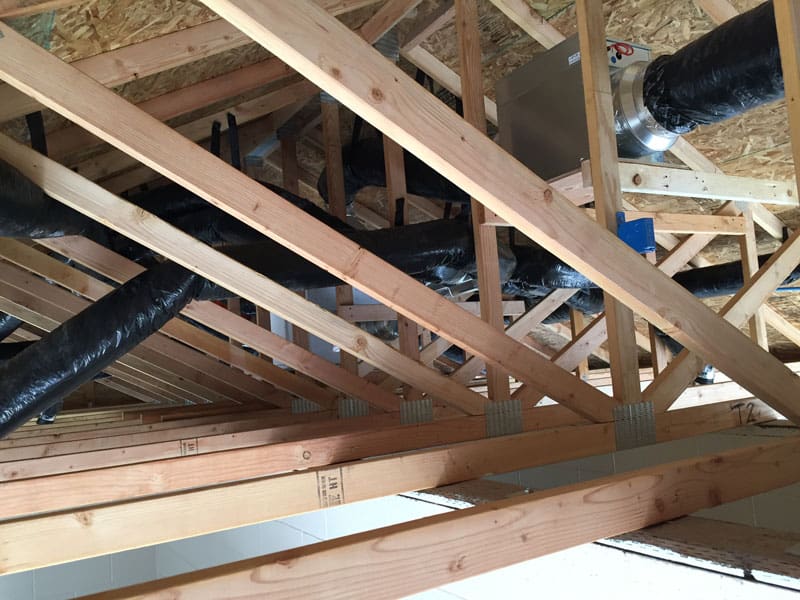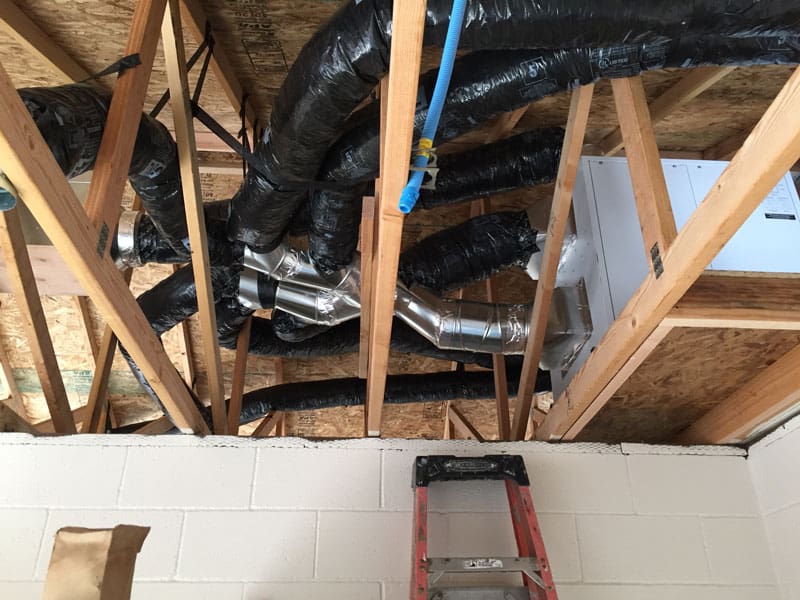
Romtec designs, manufactures, supplies, and constructs public buildings for all types of applications. Many buildings are located in rural areas that have extremely varied weather conditions season to season. In these areas, insulation is a major necessity, but highly insulated buildings typically do not have good ventilation. In these situations, heat recovery ventilation (HRV) can be a good way to ventilate a building without dramatically impacting the insulation. This type of system must be integrated into the building and offers many benefits for the facility.
One recent project by Romtec was for a combination restroom and shower building located in a rural part of Oregon. The location of the building is an area with high heat in summer months and many feet of snow in winter months. For this location, the building had to have a heating, ventilation, and air-conditioning (HVAC) system. Specifically, this building included radiant cove heaters for operation in winter months. In order to include an HVAC system, building codes required high levels of insulation for this shower building. In order to get the HVAC system it needed, this building also required an HRV system to improve the building ventilation.

Functionality of the HRV System
So, how does an HRV system work? The concept is pretty simple. A mechanical heat recovery ventilation system uses two fans. One fan draws air out of the building while the other fan draws air into the building. Ducting draws air from several rooms into one heat exchanger. The heat exchanger allows the heat energy in the air to transfer to the other duct. In winter months, this allows the heated air in the building to transfer up to 80% of its heat to cool, fresh air being drawn into the building. This provides clean, ventilated air without significant heat loss. In summer months, the hot exterior air transfers its heat to the cool air that is discharged from the building. This cools down the incoming fresh air to prevent the building from getting too hot.
HRVs are great additions to buildings that have HVAC requirements and also have insulation requirements that prevent good ventilation. For many buildings, installing a good HRV system can be accomplished in several building designs. The easiest way to install an HRV is to locate the mechanical pumps, heat exchanger, and ducting in the roof trusses. This allows the building floor plan to stay at an economical square footage. The only downside is that maintenance access to the HRV system is limited to attic space. These systems can also be located in centralized mechanical rooms. This provides easy access to complete HRV system and ducting, but this configuration will increase the size of the building.

HRVs are great systems to help maintain the energy efficiency of buildings with HVAC system while also providing continuous ventilation for the building. Good public buildings, especially public restrooms, are much nicer to use when the ventilation of the building is good. Additionally, good ventilation can improve the overall hygiene of the building and may be required by code in some areas. With Romtec, you get the in-house design expertise you need to get any type of building designed, supplied, and constructed with fully functional HVAC and HRV systems. Contact Romtec today to get started on your new building project!
